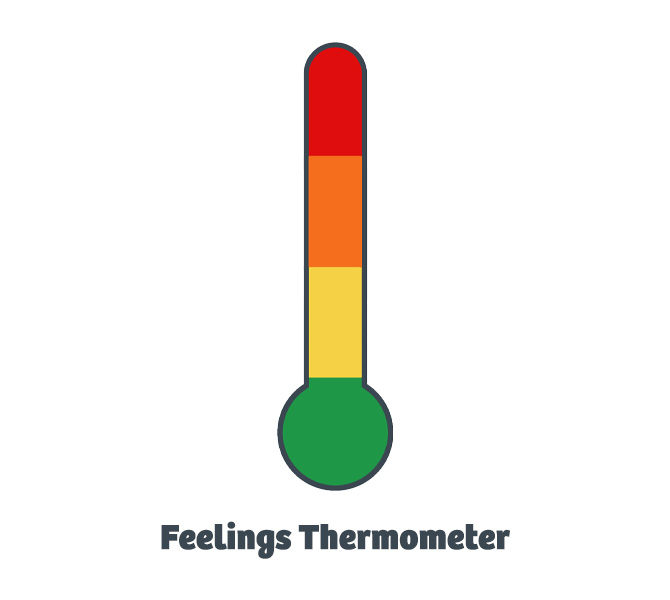By Skyler Kociuba
With factors such as social media, academic stress, peer pressure, familial expectations, and not to mention overall hormonal changes and brain development, the teenage years are complex to say the least—filled with a rollercoaster of emotions for both teens and their families.
In a world filled with opportunities ahead, as well as what-ifs, teenage anxiety is ever-present, often leading to the teen feeling overwhelmed, stressed, and struggling to handle the other uncomfortable emotions that come along with anxiety.
Maybe this leads to the teen lashing out by yelling at parents or siblings, isolating in their bedroom for hours on end, or engaging in impulsive behaviors such as substance use or missing curfew. If you are reading this and find yourself thinking, “Yes, I know this, but how do I help?”, you’ve come to the right place.
What Unhealthy Coping Skills Tell Us About Teens’ Emotions
By definition, Dr. Priyank Iyer, in the article Understanding Unhealthy Coping Skills: Overview and Implications, describes unhealthy coping skills as behaviors individuals often resort to in moments of stress and emotional distress that may offer a temporary escape and may also have long term implications on the person’s mental and/or physical health.
In simpler terms, all the behaviors listed above, although unhelpful and unhealthy, are coping skills nonetheless. To help the teens through these distressing times without engaging in unhealthy coping behaviors, we need to understand the different levels of intensity of the emotions they are experiencing.
The Feelings Thermometer: A Visual Guide to Teens’ Emotional Intensity
Think of emotional intensity as being measured on a thermometer like the one pictured below:

Green
In the green zone, we are feeling calm, cool, collected, happy, and in control. During this time, we don’t need to cognizantly use specific coping skills as our emotions aren’t uncomfortable, and are not leading to detrimental behaviors.
Yellow
As we enter the yellow zone, we may be starting to feel uncomfortable emotions and/or somatic symptoms that can go along with these emotions; for example, a slight stomach ache co-occurring with anxiety. Other emotions may be nervous, worried, unsettled, or inconvenienced.
Orange
The orange zone is where we will start feeling emotions more intensely. Instead of feeling slightly inconvenienced or worried, we would feel an increase in anxiety, frustrated, annoyed, or irritable, to name a few. At this level, our emotions tend to be uncomfortable due to the level of intensity that we are experiencing.
Red
The red zone is the “danger” zone. This is where we feel our emotions the most intensely and where we feel the least amount of control in our behaviors/responses to those emotions. For example, in the red zone, we would feel angry, furious, fearful, perturbed, out of control, sorrowful, or despondent.
Keeping these zones in mind helps us understand how to best support our teens based on the intensity of their emotions.
When Emotions Boil Over: Putting Yourself in Your Teen’s Shoes
Think about it this way: You’re feeling angry after sitting in traffic and are teetering on the red zone, and when you walk in your front door, you’re met with an abundance of questions being thrown at you about various things, such as dinner, laundry, an unpaid bill, and a play date. The list goes on. Your frustration is so built up that you explode and yell at your family, and storm off.
Upon reflection, was your family bombarding you with questions helpful in that moment? As indicated by your outburst, the answer is no.
Now, put yourself in your teenager’s shoes. Does asking them multiple questions when they’re in the red zone seem helpful? Again, the answer is no. As a parent or guardian, the best thing you can do in that red zone is to offer what we call grounding skills.
Grounding Skills: Practical Ways to Support Teens Through Emotional Highs
Grounding skills help reorient a person during times of heightened emotions, allowing them to be present in the moment and, in our case, lower their mood into the orange zone.
Examples of Red Zone Skills
During the red zone, your teen’s brain is so focused on the intensity of the emotions that they’re feeling that they will most likely struggle with making any complex decisions and will lack the wherewithal to use any skills that require deeper thought; therefore, the skills to offer will need to be instinctual and virtually thoughtless.
An example of such a skill is TIPP—which stands for temperature, intense flavor or exercise, progressive muscle relaxation, and paced breathing.
To practice the T in TIPP, the goal is to change the body’s temperature quickly to decrease the intensity of an emotion, almost like a shock to the system. A way to do this would be to dip your face in ice-cold water for 30 seconds, or hold an ice cube in your hand and count backward from 60 when experiencing red zone levels of anxiety.
The first way to use I in TIPP is all about intense exercise to engage your body in a way that distracts and regulates the body and mind during intense emotions. This would include doing exercises such as wall sits, planks, jumping jacks, or sprints to increase the body’s heart rate. The other way to use I is by introducing intense flavors, to use your body’s sense of taste to shock the system and distract from the intensity of the emotion, therefore allowing your body to regulate. For example, eating a super sour candy such as a Warhead, or something super minty like a Lifesaver Mint.
The first P stands for progressive muscle relaxation, which is a type of guided meditation that takes a person through each muscle of the body, relaxing the muscles individually.
The second P stands for paced breathing, which is a way for us to slow our bodies down during times of intense emotions. This could be 4×4 breathing, triangle breathing, or counting ceiling or floor tiles while taking deep breaths, to name a few common techniques.
Other examples of skills to use during the red zone to help get our brain to a place where it can think things through are breathing techniques, 5 senses, and guided imagery.
Examples of Orange and Yellow Zone Skills
Once we are out of the red zone, the orange and yellow zones are where we can use skills that require more thought and focus. The goal of these skills is to help lower the intensity of our emotions by slowing down our thoughts and gaining control of our behaviors.
An example of a skill is called IMPROVE. IMPROVE is an acronym that helps us improve our situation when our feelings are in our orange and yellow zones by replacing the moment that is causing distress with something more pleasant.
The acronym is as follows:
- Imagery: Imagine a beautiful scene on the beach or in the mountains. Imagine a safe place in your home.
- Meaning: Find purpose or meaning in your daily activities.
- Prayer: Ask for strength from your supreme being.
- Relaxation: Breathe deeply, take a hot bath, massage your neck.
- One: Focus your attention on this moment.
- Vacation: Go to the beach or the woods for a walk.
- Encouragement: Say positive affirmations aloud to yourself. (2025 © DBT.tools)
Examples of Green Zone Skills
Finally, once we are at the lower end of our yellow zone and in the green zone, we want to use skills to reflect on the triggering event and plan ahead for future instances where triggers may be present.
The green zone is a state where our emotions are in our control, and our brain is not in panic mode, so we are better able to communicate our needs. The skills we use here are considered reflective and part of preventative maintenance.
Skills that can be used in the green zone include SEEEDS, journaling, behavior chains, CBT cycles, coping ahead, and utilizing support systems.
Teens’ Emotions: Building Skills for Future Challenges
Oftentimes, we try to “fix” a behavior without understanding the “why” of engaging in that problematic behavior. Behavior chains are a skill that helps us identify the factors that led to our engaging in an unhelpful behavior or unhealthy coping skill.
This is a reflective tool, so it’s used AFTER the fact to help us look into the why, or the functionality, of that unhelpful behavior. Due to this skill being reflective, it takes a lot more focus and brain power than skills we would use at a red or orange zone skill.
This is also a useful tool to guide conversation on how things can be handled differently in the future; for example, discussing when and/or how a parent or guardian could offer support, and what skill the teen could have in their back pocket in preparation for similar situations in the future.
About the Author:

Skyler Kociuba, LCPC
Skyler is a Licensed Clinical Professional Counselor with a passion for working with adolescents, children, and adults, guiding them through a unique journey of healing and self-discovery.
With over three years of experience in mental health, she specializes in anxiety, depression, trauma, grief, ADHD, behavioral issues, and more.

